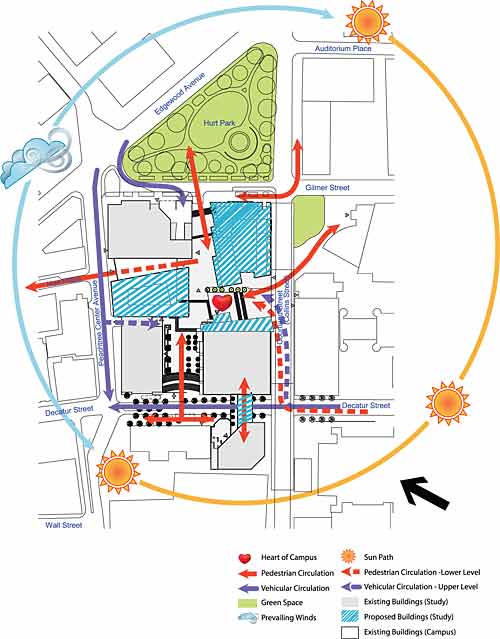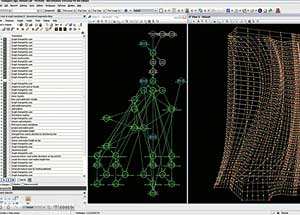Transformative Tools Start to Take Hold
Within architecture firms, the technology is forcing changes in culture and work flow. SHoP's Negro points out that before the firm started using BIM, he and his colleagues would divvy up project responsibility by drawing sheets. Now work is assigned according to a building's major elements, such as the enclosure, the vertical core, or interior partitions.
|
||
Although adjustment to this new division of labor can be difficult, Negro and other sources say the interconnected nature of the model's elements enhances communication and reveals potential problems earlier in the design process. "Because we are working on the same model, it encourages interaction more than before," says Eric Watson, AIA, of SmithGroup. Watson is project architect for one of the firm's five current BIM projects-a 63,000-square-foot life sciences building for Mesa Community College, in Mesa, Arizona.
|
||||
The BIM process is also blurring distinctions between managers, technical staff, and designers. "There is a breakdown of traditional hierarchical roles to a much more granular level where all team members are important," says Allan Partridge, principal of HIP Architects, an Alberta-based firm in its fourth year of full BIM deployment. "Technologists are being involved much earlier in the work flow," he adds.
For architects and consultants, one of the most exciting aspects of BIM is the technology's potential to collapse separate activities, such as design, analysis, and documentation, into one, although most sources would agree the link is still far from seamless. NBBJ and E/Ye Design, a four-year-old firm based in Troy, New York, and Jackson, Wyoming, are connecting the tasks of geometry rationalization and design in their development of a scheme for a 4.68-hectare (11.6-acre) office park for Dostyk, Kazakhstan. The firms are using Bentley's GC to define the configuration of the complex's curvy towers. The architects have written a script that establishes the relationship between criteria such as view corridors, height, and shape, explains Nona Yehia, E/Ye principal. Because these criteria are interconnected, an adjustment to one factor produces a change to the others, she says. Here, BIM "is an integral part of the design rather than a tool for documentation."











